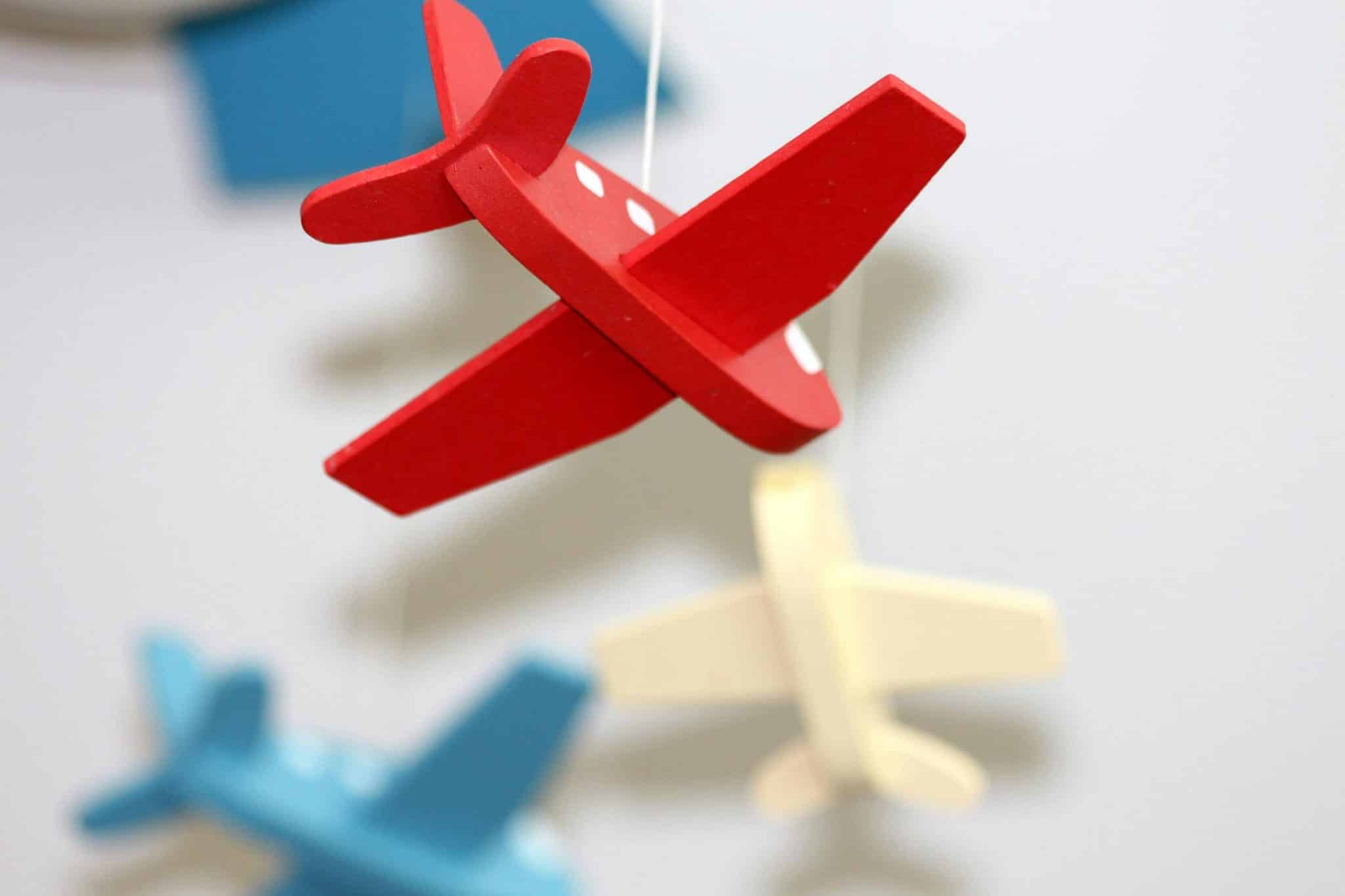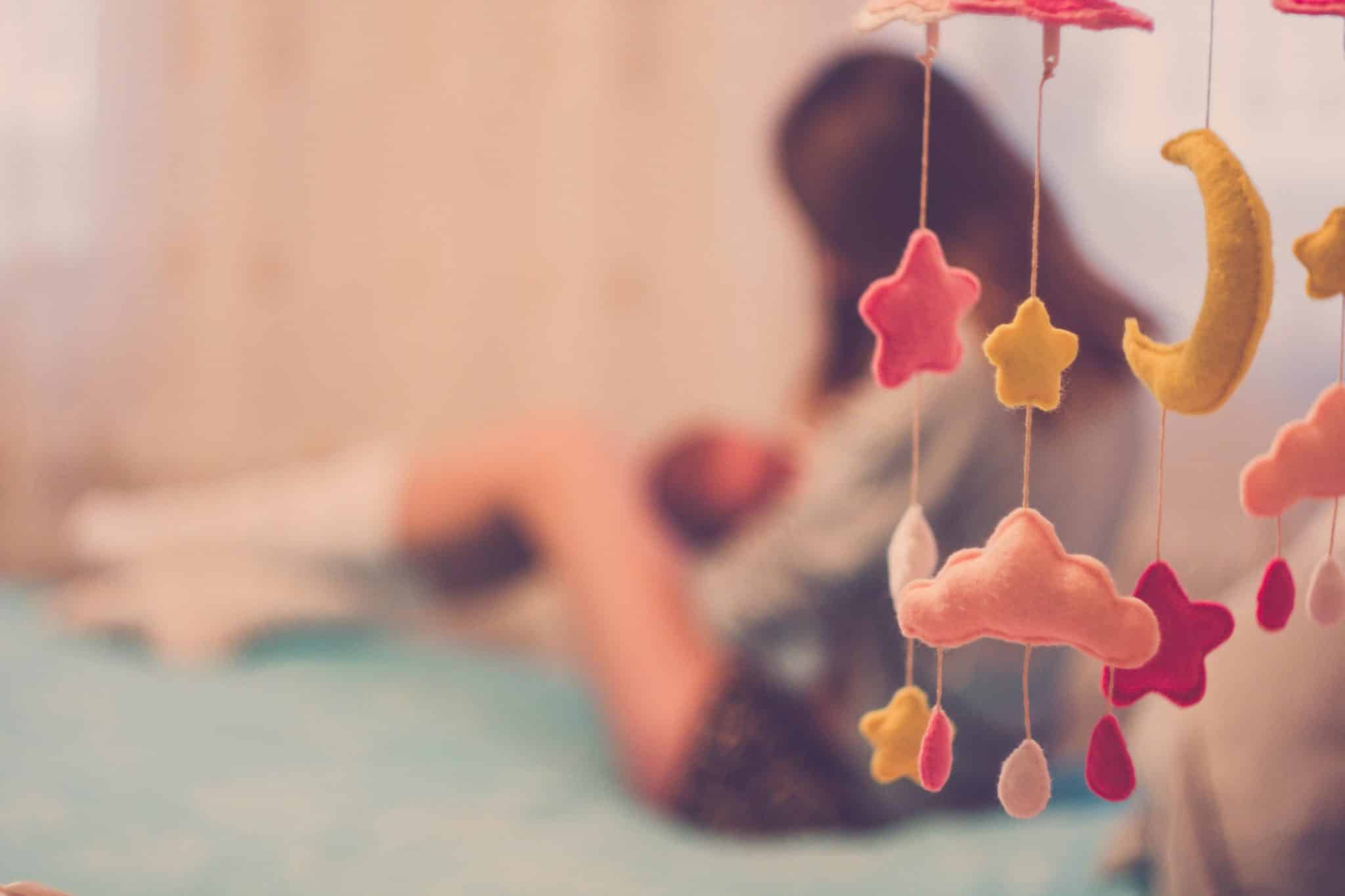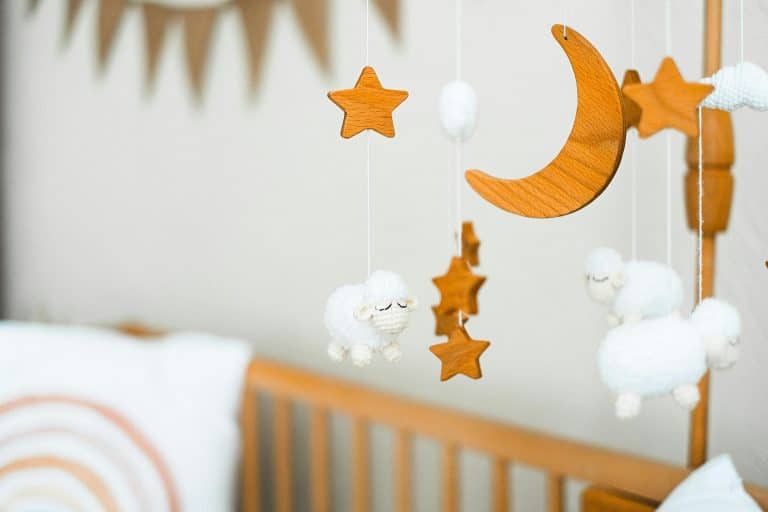A baby’s world begins with what they see. From the first few weeks of life, their eyes work constantly to make sense of shapes, light, and movement. A baby mobile, though often seen as nursery décor, plays a crucial role in this early stage of development. Its slow movement and use of colour naturally train a baby’s vision, encouraging focus and coordination.
The simple act of watching a mobile move helps strengthen the muscles that control eye movement, enabling babies to track objects smoothly and accurately. This foundational skill sets the stage for reading, movement, and focus later in life. Understanding how visual tracking and colour perception develop helps parents choose a mobile that supports both beauty and growth.
Key Takeaways
- Visual tracking helps babies develop eye coordination and concentration.
- High-contrast colours and soft motion stimulate healthy visual growth.
- Mobiles connect sensory learning with calm, predictable play.
- Colour progression in mobile devices supports brain development across various stages.
How Babies Learn to Focus
Newborns can see clearly only up to about 30 centimetres, which is just enough to recognise a parent’s face or a mobile above the crib. Around six weeks, they begin to follow slow movement. This ability, known as visual tracking, is one of the first signs of brain and eye coordination.
A mobile with soft, steady motion encourages this learning naturally. As babies follow the turning figures, their eyes learn to move in smooth, coordinated patterns. Over time, this repetition helps the brain develop the ability to focus and accurately interpret movement.
Colour and Brain Stimulation

Colour is one of the most powerful tools for early learning. Newborns respond best to black and white because their eyes are still developing sensitivity to contrast. As they grow, they begin to notice stronger hues, such as red, yellow, and green. A mobile that features these colours keeps babies engaged without overstimulation.
Bold, simple shapes work better than complex designs because they help babies distinguish edges and patterns clearly. Clean, balanced colour contrast stimulates the visual cortex, which supports focus and recognition.
Why Movement Matters
The gentle rotation of a mobile helps a baby’s brain predict motion and improves concentration. Slow movement is more beneficial than fast spinning because it allows the eyes to adjust and track smoothly. This steady motion also creates calm and security, making the mobile a valuable part of the daily routine.
Mobiles with adjustable speeds or natural airflow motion work best, giving just the right amount of visual stimulation. Predictable patterns help babies feel relaxed while still engaging their senses.
For a complete understanding of how mobiles influence brain growth and sensory development, read the full guide on how baby mobiles support infant development and sensory growth.
Creating a Supportive Visual Environment
The environment surrounding a baby plays a crucial role in their visual development. Soft lighting, a calm space, and safe placement all matter. The mobile should hang securely about 30–40 centimetres above the crib, within view but out of reach.
Parents can enhance the experience by talking to their baby while the mobile moves, describing colours or shapes, and changing the angle occasionally to provide new perspectives. These small actions turn everyday play into valuable learning opportunities.
What to Look For in a Baby Mobile

When choosing a mobile, focus on designs that combine visual appeal with developmental benefits.
Here are a few qualities that make a difference:
- High-contrast or primary colours
- Lightweight and balanced design
- Smooth, slow movement
- Safe materials without small detachable parts
- Optional soft sounds for sensory variety
A thoughtfully designed mobile grows with your baby, offering the right level of stimulation through each stage of early development.
Final Thoughts
A baby mobile does more than decorate a nursery. It helps your baby’s brain, eyes, and senses learn to work together. The combination of colour, light, and motion teaches focus, awareness, and calmness. Choosing a mobile that supports these natural learning stages provides your baby with a gentle introduction to visual and sensory development.
You can explore nursery essentials from trusted retailers like Shopica to find baby mobiles that suit your home’s style.
FAQs
1. When do babies start following a mobile with their eyes?
Most babies begin tracking moving objects around six to eight weeks of age, but some may show interest earlier depending on their visual development.
2. What colours are best for newborn vision?
Black, white, and grey are the best colours for newborns. As they reach two to three months, strong primary colours like red, yellow, and green stimulate better visual response.
3. Can a mobile help improve a baby’s focus?
Yes, mobiles help babies strengthen eye coordination and develop attention span through repetitive tracking and movement.
4. How long should a mobile be used each day?
A few short sessions throughout the day are enough. Babies need time to rest their eyes, so keeping playtime balanced helps avoid overstimulation.
5. When should parents remove the mobile?
Once a baby can sit up or reach for objects, typically around five to six months, the mobile should be removed for safety reasons.













